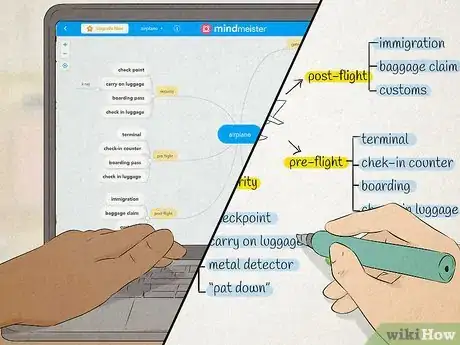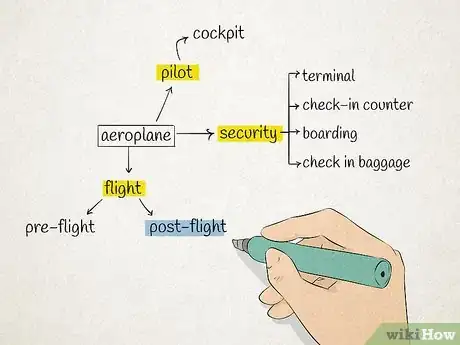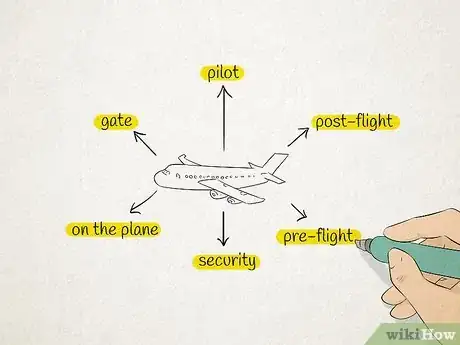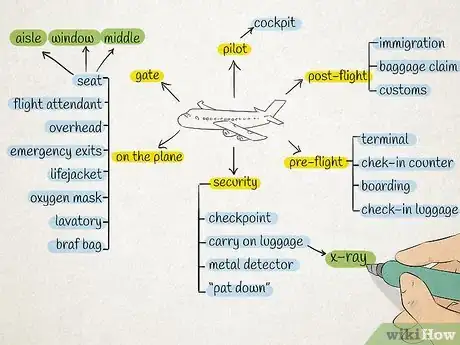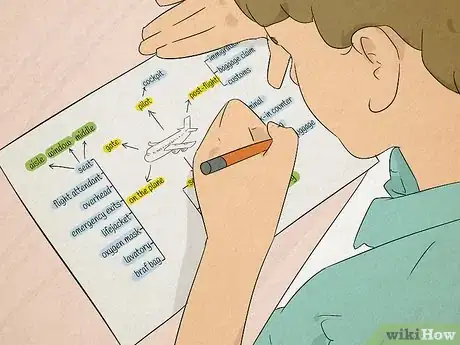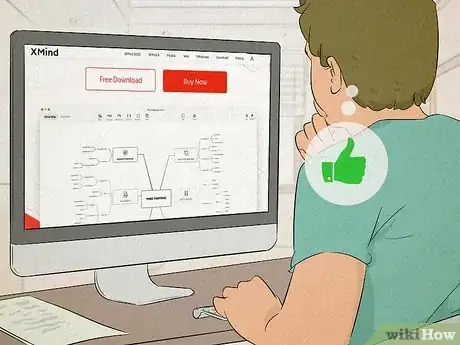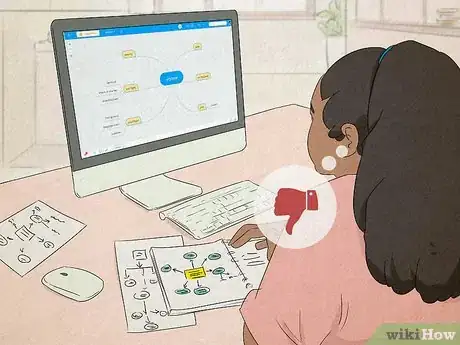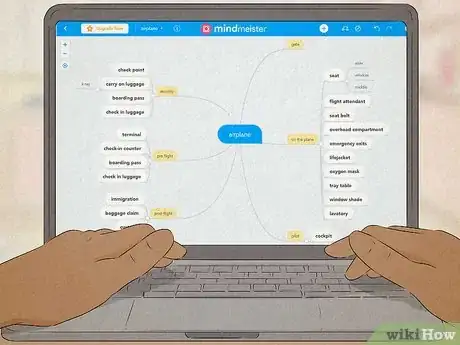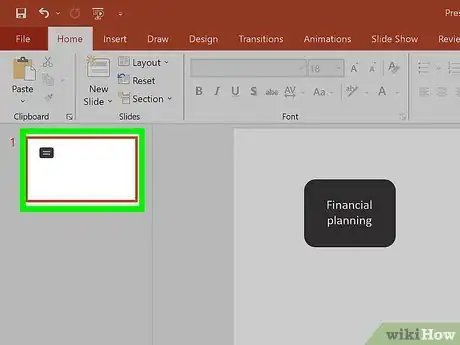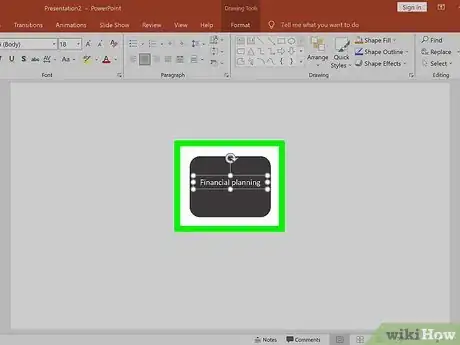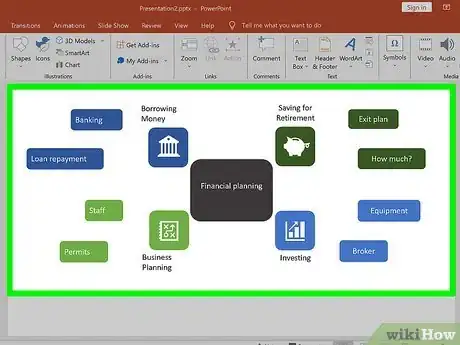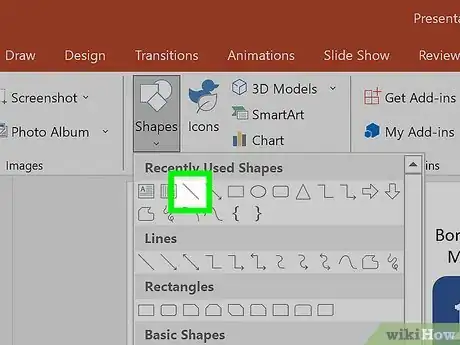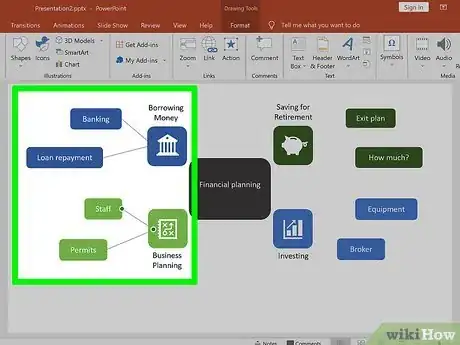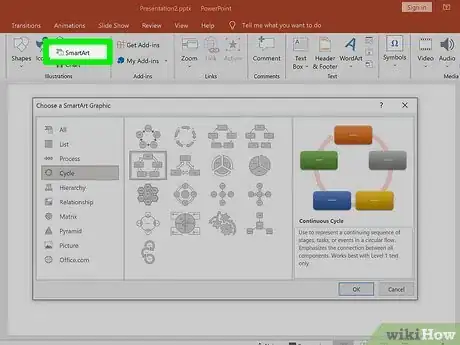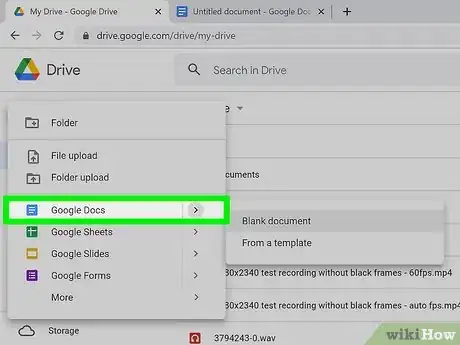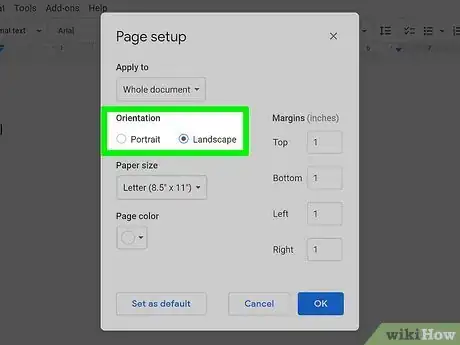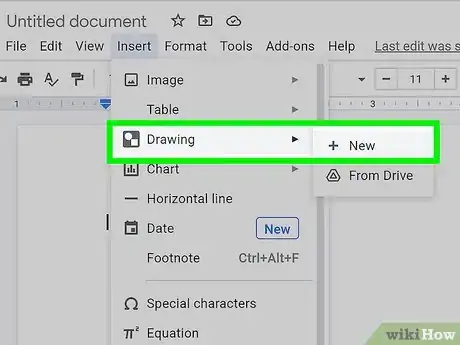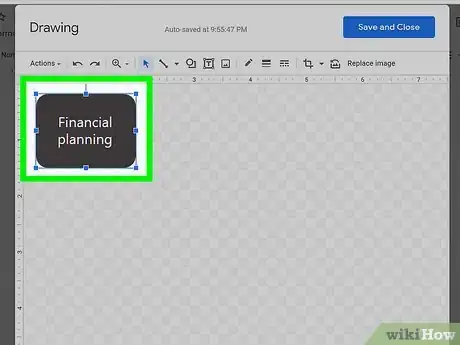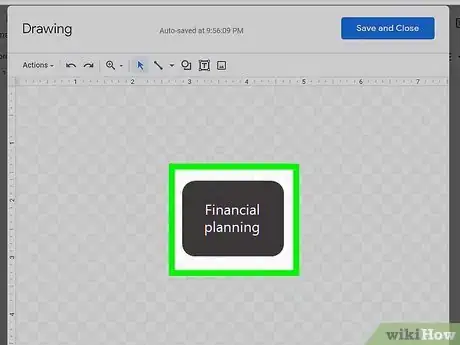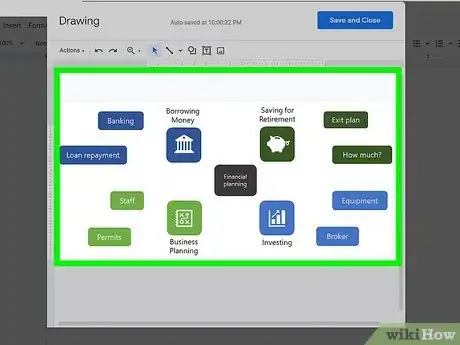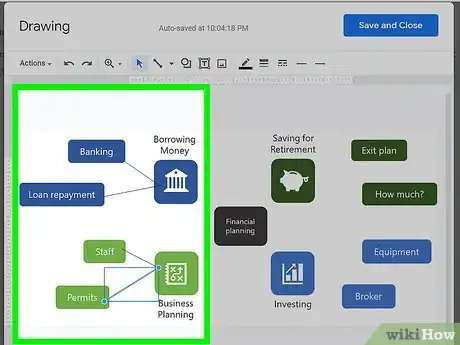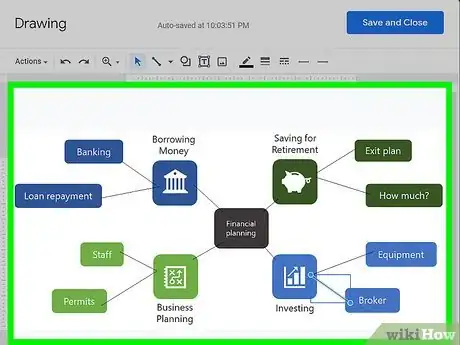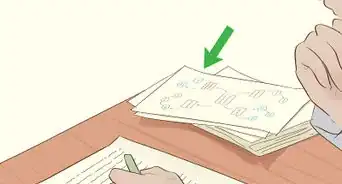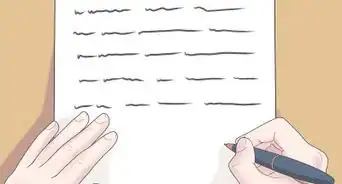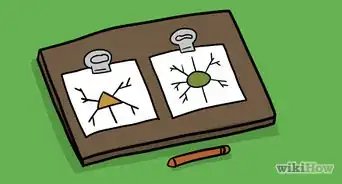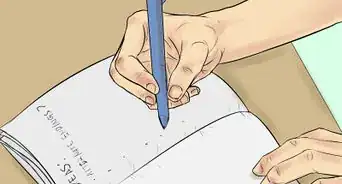This article was co-authored by Jeff Siegel and by wikiHow staff writer, Emily Liu. Jeff Siegel is a Holistic Life Coach and the Founder of Jeff Siegel Wellness. With nearly 10 years of experience, he specializes in mind-body medicine, life coaching, health and wellness coaching, mindfulness, corporate training, and transformational public speaking. He received a Master of Education from Harvard Graduate School of Education, a Master of Buddhist Studies from The University of Hong Kong, and a BSc in Neuroscience & Biology from Emory University. He’s also a certified personal trainer, a certified Eating Psychology Coach, and a certified Koru Mindfulness Teacher.
There are 17 references cited in this article, which can be found at the bottom of the page.
wikiHow marks an article as reader-approved once it receives enough positive feedback. This article received 24 testimonials and 80% of readers who voted found it helpful, earning it our reader-approved status.
This article has been viewed 1,009,801 times.
People have been using visual methods of representing, organizing and understanding information since ancient times. In the 1970s, researcher and educator Tony Buzan formally developed the mind map. Its colorful, spider- or tree-like shape branches out to show relationships, solve problems creatively, and help you remember what you’ve learned. Mind mapping can help you understand things more easily. This article will walk you through planning a mind map, constructing it by hand, and looking at the pros and cons of many mind mapping software programs now on the market.
Steps
Planning Your Mind Map
-
1Imagine an airplane flying in the sky. When you visualize or see an airplane in the sky, the airplane is your central focus at that moment. But your brain isn’t done there. It also immediately begins to make references, or associations, to the airplane. These might include the color of the sky, different types of planes, how they fly, pilots, passengers, airports and so forth.[1] Because we think in images, not words, these associations often appear in a visual form in our minds.
- Your mind instantly starts making a map, creating links between these associations, or concepts – a mental website of sorts.
-
2Visualize a spider or a tree full of branches now. With a mind map, you take the concept of the airplane and write AIRPLANES in the center (the spider’s body or the trunk of the tree) of a blank piece of paper. Then, radiating out from the airplane, are different colored lines (tree limbs or spider legs). On these you write the associations you had to airplanes, such as PILOTS and AIRPORTS. From each of these are more associations, which you note on individual lines.
- In association with pilots, you might think of their pay or training. And so the map grows.[2]
- A mind map mirrors how our brains actually process and recall information – dynamically and visually, not in a purely linear fashion as it was once thought.
- For instance, mind mapping has proven very effective for note taking. Instead of writing down each word the teacher says as it’s said (linear thinking), you write the name of the lecture topic in the center of your paper. As subtopics, examples, dates and other information are discussed, you draw and label corresponding branches.
- It’s also used instead of standard outlines in academia to prepare essays, to write research papers, to study for exams, etc.
Advertisement -
3Use your brain the way it thinks. Buzan called this radiant thinking. When our brains lock onto something – an idea, sound, image, emotion, etc. – that “something” stands at the center of our thinking. Radiating out from it are countless other things, ideas, images, emotions, etc., that our brains associate with it.[3]
- A mind map helps you make connections between and among these different pieces of information and concepts. And, the more connections or associations our brains make to a thing, the more likely we are to remember it.
-
4Create, capture, consume and communicate information. Making these connections allows you to do each of these quickly and effectively. Making them also happens organically as you draw the map. The use of words, images, lines, color, symbols, numbers and so forth identify and link concepts. Research shows that writing and imagery both improve memory, creativity and cognitive processing. Color is also a potent memory enhancer.[4] [5] Together they create a mind map that's fed by several of our senses.
- Mind maps are a tool to create things and to devise approaches for handling issues. Doing this requires brainstorming. So, for instance, you could create mind maps for things like your wedding, new recipes, an advertising campaign, proposing a raise to your boss and so forth. Jot down what you know about the topic. It also involves solving problems, such as better managing your money, a health diagnosis, interpersonal conflict, etc. – all of which can be mind mapped.
- They are also tools to capture information that’s directly relevant to a topic so you can compress large amounts of information. For example, they help you figure out what you really need to be taking notes on, recording for a meeting’s minutes, writing in your autobiography, using in your resume, etc.
- Mind maps help you easily consume information and then use it. So, they can help you better remember things, such as the content of a book, discussions with others, your schedule and so forth. You can also use them to analyze complex subjects like trading stocks, computer networking, engine mechanics, etc. Finally, they’re useful in planning and executing things like a vacation, your time, a sensitive work project, etc.
- They are also powerful tools for communication.[6] You can create a mind map for presentations, group projects, heart-to-heart conversations, written materials, etc.
-
5Make them by hand or with a computer program. People have been drawing mind maps for decades. With the advent of mind mapping software, many people are creating them on their computers. The business world in particular is increasingly using software for everything from recording meeting minutes to complete project management. The choice is personal and dependent on the environment.
- Nonetheless, advocates highly encourage you to find your own style and let it be free flowing.
- Don’t be too rigid when constructing a mind map. In doing so, you don’t use both your right and left brain hemispheres as actively.
- A mind map relies upon the person using both hemispheres to create a network of associations – the right hemisphere for images, color, dimension, imagination, and “big picture” thinking and the left for words, logic, analysis, numbers, and sequential thinking.[7]
Creating a Mind Map by Hand
-
1Show the shape of the subject. A mind map should ultimately show the shape or architecture of the subject. It does this by visually demonstrating the relative importance of various concepts to one another and how they relate to one another. You should be able to glance at it later and remember the information. First, however, you must allow it to grow as ideas come to you, and as you see more connections.
- The adage, “A picture speaks a thousand words,” is a good way of understanding what your mind map should look like. It shows both the big picture and the details.
- You can also write down the subject in words instead of drawing it, or even combine methods by both writing and drawing the subject.
-
2Brainstorm your topic. You can brainstorm the topic before beginning to draw, particularly if you're not recording information – such as notes from a lecture or meeting. This can be done individually or in group settings. It involves simply writing down everything you can think of related to the topic. Use keywords or phrases as opposed to sentences or paragraphs.
- Don’t organize information at this point. Just get it out.[8]
- When you're brainstorming, ask yourself how the topic relates to what you already know and what’s different about it.
-
3Go straight to mapping first instead. Many people prefer going straight to the drawing. Either way, first write or draw your topic in the center of the page. Make sure you have your paper in a landscape orientation, and in the middle write the name of the topic in 1-2 words. Draw a circle around it.[9] If you’re writing down your topic, some recommend only using lowercase or uppercase printed words to reduce clutter and to make it easy to read quickly. Play with adding color to the word and circle to make it personalized.
- How you want to arrange the colors is up to you, but one idea is to use a different color for the topic word and circle to separate it from the other branches.
- Strive for a minimum of three colors in each map. They help separate ideas and aid in memory. For example, if you have four main branches, you could draw or highlight each one in a different color.
- And don't use lined paper. It can lead you into thinking in a linear fashion.
-
4Draw and label the first branches. Simply draw a line for each major sub-category of the topic that extends from the circled topic and label it with a word, very short phrase or image (like AIRPORTS or PILOTS). Don’t use abbreviations. All lines or branches should connect in a mind map, and the first branches should be the thickest.
- Each word or image used in a mind map must be on its own line.
- Use images, photos and drawings wherever possible.
- For instance, you could draw a stop sign next to a branch with a negative sub-category (airports, generally) or a bright yellow plus sign by something positive (pilots, generally).
- Use arrows, other symbols, spacing and so forth to connect images and produce an “image-rich network,” which Buzan says is the essence of a mind map.
-
5Move to the next branches. These should be thinner than the first. Think about the things that relate to your first subcategories. What are the important issues or facts related to them? In our example, what do you associate with airports? Delays? Security? Expensive food?
- You would then draw a line for each of these that branches off from the line for AIRPORTS. You’d give it a name, such as SECURITY.
- Again, use color and images.
-
6Continue branching out. You continue in this fashion as long as needed to complete your mind map. The lines will continue to become thinner as sub-categories become increasingly comprised of supporting details like facts or dates. You will also add branches to those you’ve already created. You might even add another first branch after discovering something you didn’t know.
- Some also suggest making subcategories hierarchical.
- Therefore, if “delays,” “security” and “expensive food" were all subcategories, you’d draw three lines or branches – one for each. Then you’d put what you consider to be the most important sub-category on the top or uppermost line.
-
7Add more or revise as a final. You can keep adding to it, modifying it and discovering new links. Or you can create a polished version. The latter allows you to check for consistency and errors in your logic. It also results in a neat mind map; you don’t want to clutter your mind maps. Too much clutter inhibits your ability to see both the big picture and the details.
- Either way, ask yourself what you’re learning or have learned. What larger patterns did you discover?
Using Mind Mapping Software and Apps
-
1Look at the pros. Mind mapping software and apps are rapidly expanding in their features. There are even some that are free with high capabilities. They allow for real-time virtual collaboration, brainstorming and discussion; map revision by other users; whiteboard, free-form drawing during meetings or presentations; personal use on your cell phone; management of complex projects from the ground up, scheduling, etc.[10] [11] [12] [13]
- They range from being simple to use to probably requiring training.
- A couple of the top-rated programs are free. Others range from $4.99/month on up depending upon the features.
- They’re easy to modify, update and are orderly in appearance. You can often upload your own images.
- Generally, you can download them as a PDF, if not in a number of other formats.
-
2Evaluate the cons. Their features vary, which can limit the free-flowing nature of mind mapping.[14] So, for example, one program might allow you to insert an arrow from one sub-category to another while another doesn’t offer this option. The ability to make those types of visual links is quite important in mind mapping.
- Most don’t allow you to draw with anything other than your mouse.
- They can take time to learn and might be expensive.
- Also, handwriting enhances cognition and memory while typing lacks this benefit.
-
3Try out free software and read user reviews. Test the waters by creating mind maps in free software programs. This will give you a baseline idea of their capabilities. It will also help you determine if you think they’re useful enough to upgrade to those that aren’t free but offer more functions. Also read reviews online to see which programs people like for what types of issues. One program or app might be great for collaborating with co-workers but not very useful for keeping track of a project’s progress.
- Some free mind mapping software you can try includes Coggle, MindMapple, and NovaMind.
- Mind map is another free option that also offers paid versions with more features.
Mind Mapping in PowerPoint
-
1Open PowerPoint and click “New blank presentation.” A presentation with only a title slide will appear. Delete the default text boxes so that the slide is like a blank sheet of paper.[15]
- Though it can be helpful to use a specialized program for mind mapping, you can just as easily mind map with PowerPoint, which is easier to access and which you may already have.
-
2Type your main topic or idea into a text box. Create the text box by going to the “Insert” tab and then clicking the “Text Box” option. A text box will appear in the center of the blank slide, which you can then type your word into.[16]
-
3Drag the main topic text box to the center of the slide. When you first add the text box, it should appear in the center of the slide by default. But if your text box isn’t centered, just click and drag it until it’s positioned correctly.[17]
-
4Insert additional text boxes to build off the main idea. If you already know what you want to add next, repeat the “Insert” process for each new word and type the words into the boxes.
- You can wait to add more text boxes if you’d rather add in the lines first.
- You can also insert images to expand on your topic!
-
5Position the new text boxes around the main topic. You have the freedom to place these wherever you want, depending on what you want your mind map to look like.
- For example, you could arrange them in a circle or around your main idea, or only branch off to the right side.
-
6Insert lines between the new text boxes and main topic. Go to “Insert” again, and then “Shapes.” Under “Shapes” you will see a category labeled “Lines” that contains several different line options. Click the one you want and it will appear on your blank slide.[18]
-
7Position the lines to connect all of the words. Click and drag the lines so that all of your ideas are connected. If you need to, you can resize the length of the lines or change their orientation.[19]
-
8Continue adding branches and building off of each idea. Depending on how many ideas you have for your mind map, you could add just a couple more branches or many more. Let the process guide you!
-
9Customize your map. You can do this as you grow your map, or wait until you’ve finished the whole thing first. PowerPoint has a lot of customization options that will allow you to make your mind map unique, exciting, and thought-provoking!
- For instance, you can type your words into text boxes that are other shapes (like circles) to add variety and personality to your map. To do this, click “Insert,” then “Shapes.” Select the shape you want and you’ll be able to type into it.[20]
- You can also format your text in different ways, like changing its size, making it bold, or adding colors.
- Don’t forget that you can add images too!
- If you don’t want to make a mind map from scratch in PowerPoint, you can also use “Insert” to add “SmartArt” to your blank slide. Choose the shape template you want and begin adding text.[21]
- You can create a mind map in Google Slides just as easily and in a similar way: go to “Insert” and you should see the “Text Box” option, as well as options to add a “Line” and a “Shape.”
Using Google Docs to Make a Mind Map
-
1Open Google Drive and click on “New.” Select “Google Docs” and a blank document will appear.
- Google Docs is another great and accessible option that’s easy to learn and adapt for mind mapping.
-
2Click “File” and then “Page setup” to view the document settings. To set up the document correctly for mind mapping, change the“Orientation” from “Portrait” to “Landscape.” Hit “OK” to return to the blank document.[22]
-
3Click on “Insert” and then “Drawing.” Create a “New” drawing and the window will pop up. On Google Docs, you’ll make your map in this separate drawing window before it appears on your document.[23]
-
4Create the text box for your main topic. The text box option isn’t labeled, but you’ll see an icon of a square with a “T” in the center. Click on the icon and type the word in. Resize the text box to the length of your word.[24]
-
5Drag the main text box to the center of the drawing grid. Click and drag until it’s positioned correctly.
- If you don’t see the drag option, hover your mouse pointer over the edges of the textbox until you see the 4-arrow icon appears. This indicates that dragging is possible.
-
6Insert more text boxes to grow your map. For each new word you want to add, click the text box icon and type it in. Drag to position it around your main topic in the arrangement or shape that you want.
- You can come back to this later if you’d rather add in lines first.
- You can also insert images to arrange around your topic.
-
7Insert lines between the new text boxes and main topic. Look for an icon of a line with a dot on each end. Click the carrot to see all of the line options, and choose the one you want. Then click anywhere on the drawing grid, and the line will appear.[25]
-
8Position the lines to connect your words. Every time you add a line, you will see options to resize and rotate it. Do this for each line as needed, and then drag the line to connect the words to each other.
-
9Add more branches to develop each idea. Continue using the text box and line options to grow your map until it’s completed. How many branches you end up adding depends on what your concept is and how big you want your map to be.
-
10“Save and Close” your drawing when you’re done. Click the button located on the upper right of the drawing window. You will be taken back to the main document, where your mind map drawing will now appear.
- You can go back and edit this drawing whenever you wish, so don’t worry if you can’t finish your mind map in one drawing session. Just double click on the drawing to open up the “Drawing” window again.[26]
-
11Add variety to your map. You can either do this while you work, or wait until you’re completely done. Google Docs has many customization options that will allow you to adjust line and font sizes, add color and images, and even include shapes.
- For example, you can type your words into shapes instead of normal rectangular text boxes. To do this, click the icon containing a circle and part of a square behind it (this is the “Shape” icon). Choose the shape you want, double-click on it, and type your word in.[27]
- You can do this on Word as well. Create a blank document and use the “Insert” function to add the text, lines, and shapes that you want.
- Don’t feel limited in your software choices: most programs that have illustration capabilities—like OneNote, Visio, or even Excel—will allow you to add shapes and lines (some may even come with templates) and provide great platforms to try creating mind maps on!
Expert Q&A
Did you know you can get expert answers for this article?
Unlock expert answers by supporting wikiHow
-
QuestionAre mind maps good for brainstorming specific life goals?
 Jeff SiegelJeff Siegel is a Holistic Life Coach and the Founder of Jeff Siegel Wellness. With nearly 10 years of experience, he specializes in mind-body medicine, life coaching, health and wellness coaching, mindfulness, corporate training, and transformational public speaking. He received a Master of Education from Harvard Graduate School of Education, a Master of Buddhist Studies from The University of Hong Kong, and a BSc in Neuroscience & Biology from Emory University. He’s also a certified personal trainer, a certified Eating Psychology Coach, and a certified Koru Mindfulness Teacher.
Jeff SiegelJeff Siegel is a Holistic Life Coach and the Founder of Jeff Siegel Wellness. With nearly 10 years of experience, he specializes in mind-body medicine, life coaching, health and wellness coaching, mindfulness, corporate training, and transformational public speaking. He received a Master of Education from Harvard Graduate School of Education, a Master of Buddhist Studies from The University of Hong Kong, and a BSc in Neuroscience & Biology from Emory University. He’s also a certified personal trainer, a certified Eating Psychology Coach, and a certified Koru Mindfulness Teacher.
Holistic Life Coach
-
QuestionHow can I find the link in my mind map?
 Paul Chernyak, LPCPaul Chernyak is a Licensed Professional Counselor in Chicago. He graduated from the American School of Professional Psychology in 2011.
Paul Chernyak, LPCPaul Chernyak is a Licensed Professional Counselor in Chicago. He graduated from the American School of Professional Psychology in 2011.
Licensed Professional Counselor
Expert Interview
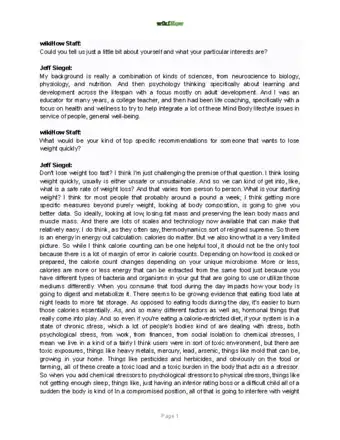
Thanks for reading our article! If you’d like to learn more about mind maps, check out our in-depth interview with Jeff Siegel.
References
- ↑ https://smallbusiness.yahoo.com/advisor/mind-mapping-project-manager-153018016.html
- ↑ https://smallbusiness.yahoo.com/advisor/mind-mapping-project-manager-153018016.html
- ↑ https://smallbusiness.yahoo.com/advisor/mind-mapping-project-manager-153018016.html
- ↑ http://www.wsj.com/articles/SB10001424052748704631504575531932754922518
- ↑ http://jlr.sagepub.com/content/22/1/19.full.pdfM
- ↑ https://books.google.com/books?id=ENk0AgAAQBAJ&pg=PT85&dq=google+books+how+to+remember+anything+the+story+of+a+mind+map&hl=en&sa=X&ei=9zQYVbHDJ4rdggSAsYP4BQ&ved=0CDwQ6AEwAg#v=onepage&q=google%20books%20how%20to%20remember%20anything%20the%20story%20of%20a%20mind%20map&f=false
- ↑ https://books.google.com/books?id=ENk0AgAAQBAJ&pg=PT85&dq=google+books+how+to+remember+anything+the+story+of+a+mind+map&hl=en&sa=X&ei=9zQYVbHDJ4rdggSAsYP4BQ&ved=0CDwQ6AEwAg#v=onepage&q=google%20books%20how%20to%20remember%20anything%20the%20story%20of%20a%20mind%20map&f=false
- ↑ https://smallbusiness.yahoo.com/advisor/mind-mapping-project-manager-153018016.html
- ↑ http://www.mindtools.com/pages/article/newISS_01.htm
- ↑ : http://www.businessinsider.com/using-mind-maps-for-productivity-2014-5#ixzz3VhmAoIxt
- ↑ https://smallbusiness.yahoo.com/advisor/mind-mapping-project-manager-153018016.html
- ↑ https://www.digitaltrends.com/computing/best-mind-mapping-software/
- ↑ http://lifehacker.com/five-best-mind-mapping-tools-476534555
- ↑ https://smallbusiness.yahoo.com/advisor/mind-mapping-project-manager-153018016.html
- ↑ https://youtu.be/o7Y2XUY9uCw?t=42
- ↑ https://support.microsoft.com/en-us/office/add-text-to-a-slide-11b8b646-f775-4b77-a512-ca51bb54b26c
- ↑ https://support.microsoft.com/en-us/topic/move-a-text-box-wordart-or-shape-dab7e591-bd7b-4dbc-a8e9-7c90a8de3a1f
- ↑ https://support.microsoft.com/en-us/office/draw-or-delete-a-line-or-connector-f304ef73-9514-450b-9bb9-28c6057020f2
- ↑ https://support.microsoft.com/en-us/topic/move-a-text-box-wordart-or-shape-dab7e591-bd7b-4dbc-a8e9-7c90a8de3a1f
- ↑ https://youtu.be/o7Y2XUY9uCw?t=60
- ↑ https://youtu.be/o7Y2XUY9uCw?t=241
- ↑ https://support.google.com/docs/answer/10296604?hl=en
- ↑ https://support.google.com/docs/answer/179740?co=GENIE.Platform%3DDesktop&hl=en
- ↑ https://support.google.com/docs/answer/179740?co=GENIE.Platform%3DDesktop&hl=en
- ↑ https://support.google.com/docs/answer/179740?co=GENIE.Platform%3DDesktop&hl=en
- ↑ https://www.businessinsider.com/how-to-draw-in-google-docs
- ↑ https://support.google.com/docs/answer/179740?co=GENIE.Platform%3DDesktop&hl=en
- ↑ https://books.google.com/books?id=ENk0AgAAQBAJ&pg=PT85&dq=google+books+how+to+remember+anything+the+story+of+a+mind+map&hl=en&sa=X&ei=9zQYVbHDJ4rdggSAsYP4BQ&ved=0CDwQ6AEwAg#v=onepage&q=google%20books%20how%20to%20remember%20anything%20the%20story%20of%20a%20mind%20map&f=false
About This Article
To make a mind map, start by writing your topic at the center of the page and drawing a circle around it. Then, create lines coming off the circle and label each one with a word or image to represent the subcategory related to your topic. From each of these subcategories, draw smaller lines labeled with important issues and facts about them. Continue adding branches with images and facts as you come up with new ideas. For tips on how to use your mind map, read on!




